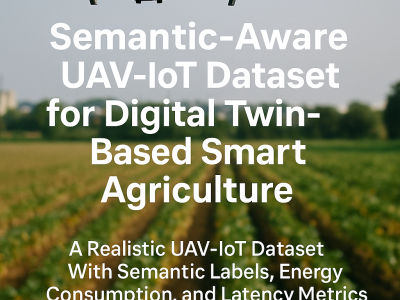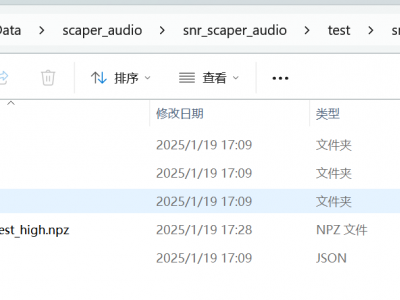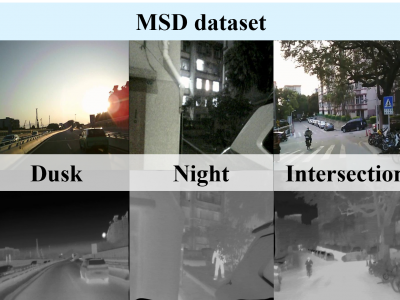Artificial Intelligence
This dataset contains 60,000 annotated records modeling UAV-based and IoT sensor-driven agriculture environments. Each record includes UAV imaging data (NDVI, NDRE, RGB damage score), IoT sensor values (NPK, pH, moisture, temperature, humidity), semantic labels (NDI, PDI), and metadata for energy consumption, latency, and service migration. It is designed for validating Digital Twin frameworks, semantic communication models, and Federated Deep Reinforcement Learning (FDRL) in precision farming.
- Categories:
 16 Views
16 ViewsThis dataset contains 10,000 synthesized sequences (10 seconds each) of North Atlantic Right Whale vocalizations for acoustic event detection research. It features four vocalization types (upcalls, gunshots, screams, moancalls) with varying durations from 0.8-4.2 seconds. The data is stratified across four signal-to-noise ratio levels (-10 to 10 dB) and split into training (7,000), validation (1,500), and test (1,500) sets.
- Categories:
 16 Views
16 Views
This dataset includes conjunctival and retinal images collected from both diabetic and healthy individuals to support research on diabetes-related vascular changes. For each subject, eight conjunctival images (four per eye: looking left, right, up, and down) are provided. Subjects with diabetes additionally have corresponding left and right retinal fundus images. Metadata for diabetic participants includes classification into subgroups: diabetes only, diabetes with retinopathy, or diabetes with related complications such as hypertension.
- Categories:
 38 Views
38 Views
We also provide a new data set CA on chassis assembly for further research in this field. CA is mainly used to study possible logical anomalies in assembly chassis. It has a total of 364 samples for the training set and 191 samples for the test set. The training set contains only normal samples, and the test set contains 93 normal samples and 91 abnormal samples. The main causes of logical anomalies contains several types of logical anomalies, such as quantity anomalies, location anomalies, size anomalies, matching anomalies and mixed anomalies, which poses additional challenges.
- Categories:
 18 Views
18 Views
We also provide a new data set CA on chassis assembly for further research in this field. CA is mainly used to study possible logical anomalies in assembly chassis. It has a total of 364 samples for the training set and 191 samples for the test set. The training set contains only normal samples, and the test set contains 93 normal samples and 91 abnormal samples. The main causes of logical anomalies contains several types of logical anomalies, such as quantity anomalies, location anomalies, size anomalies, matching anomalies and mixed anomalies, which poses additional challenges.
- Categories:
 2 Views
2 Views
We also provide a new data set CA on chassis assembly for further research in this field. CA is mainly used to study possible logical anomalies in assembly chassis. It has a total of 364 samples for the training set and 191 samples for the test set. The training set contains only normal samples, and the test set contains 93 normal samples and 91 abnormal samples. The main causes of logical anomalies contains several types of logical anomalies, such as quantity anomalies, location anomalies, size anomalies, matching anomalies and mixed anomalies, which poses additional challenges.
- Categories:
 Views
Views
We also provide a new data set CA on chassis assembly for further research in this field. CA is mainly used to study possible logical anomalies in assembly chassis. It has a total of 364 samples for the training set and 191 samples for the test set. The training set contains only normal samples, and the test set contains 93 normal samples and 91 abnormal samples. The main causes of logical anomalies contains several types of logical anomalies, such as quantity anomalies, location anomalies, size anomalies, matching anomalies and mixed anomalies, which poses additional challenges.
- Categories:
 Views
Views
We also provide a new data set CA on chassis assembly for further research in this field. CA is mainly used to study possible logical anomalies in assembly chassis. It has a total of 364 samples for the training set and 191 samples for the test set. The training set contains only normal samples, and the test set contains 93 normal samples and 91 abnormal samples. The main causes of logical anomalies contains several types of logical anomalies, such as quantity anomalies, location anomalies, size anomalies, matching anomalies and mixed anomalies, which poses additional challenges.
- Categories:
 Views
ViewsThe use of technology in cricket has seen a significant increase in recent years, leading to overlapping computer vision-based research efforts. This study aims to extract front pitch view shots in cricket broadcasts by utilizing deep learning. The front pitch view (FPV) shots include ball delivery by the bowler and the stroke played by the batter. FPV shots are valuable for highlight generation, automatic commentary generation and bowling and batting techniques analysis. We classify each broadcast video frame as FPV and non-FPV using deep-learning models.
- Categories:
 52 Views
52 Views


